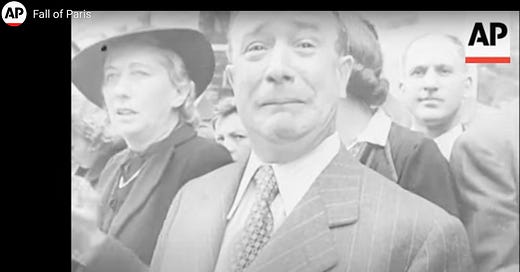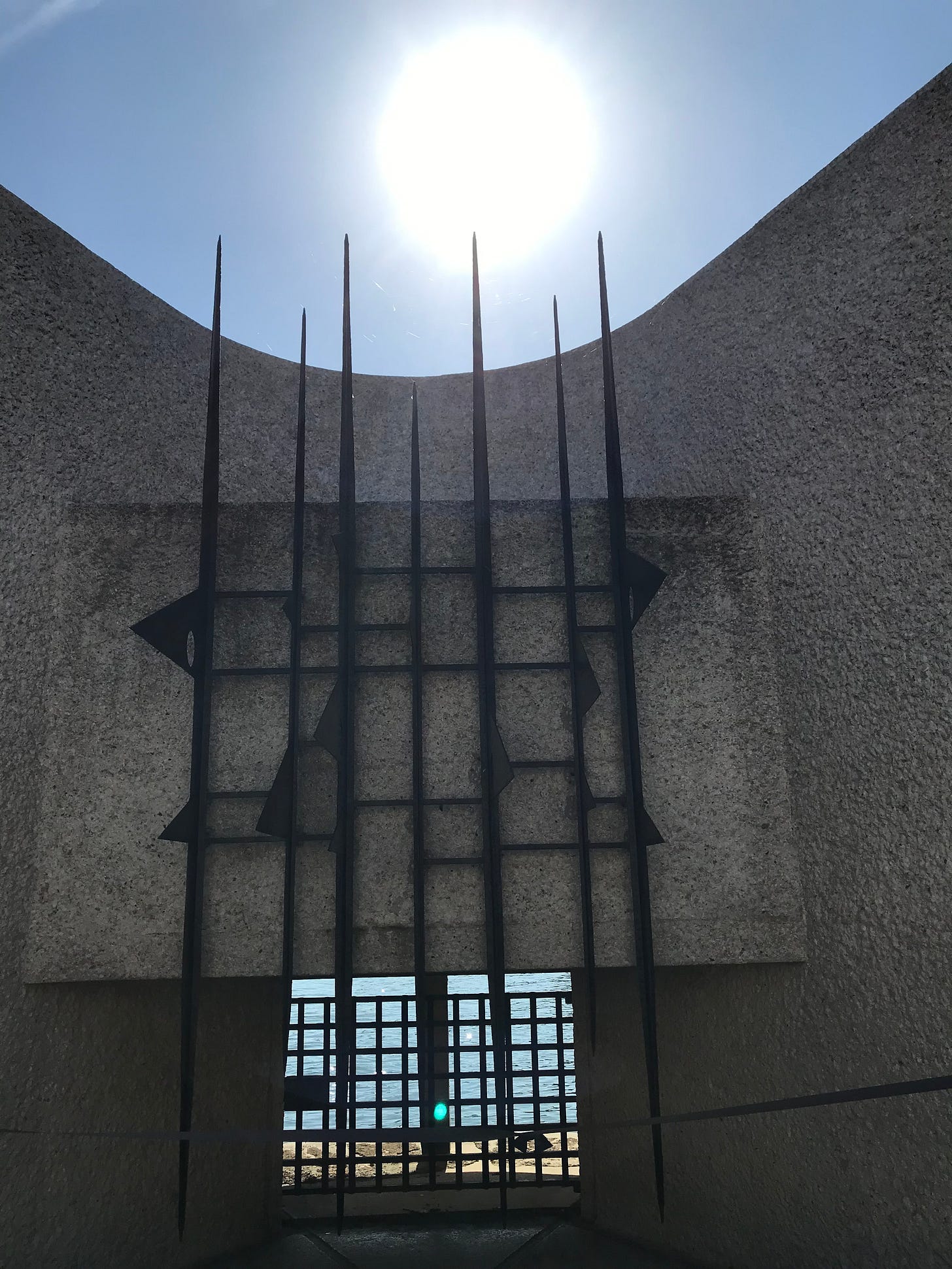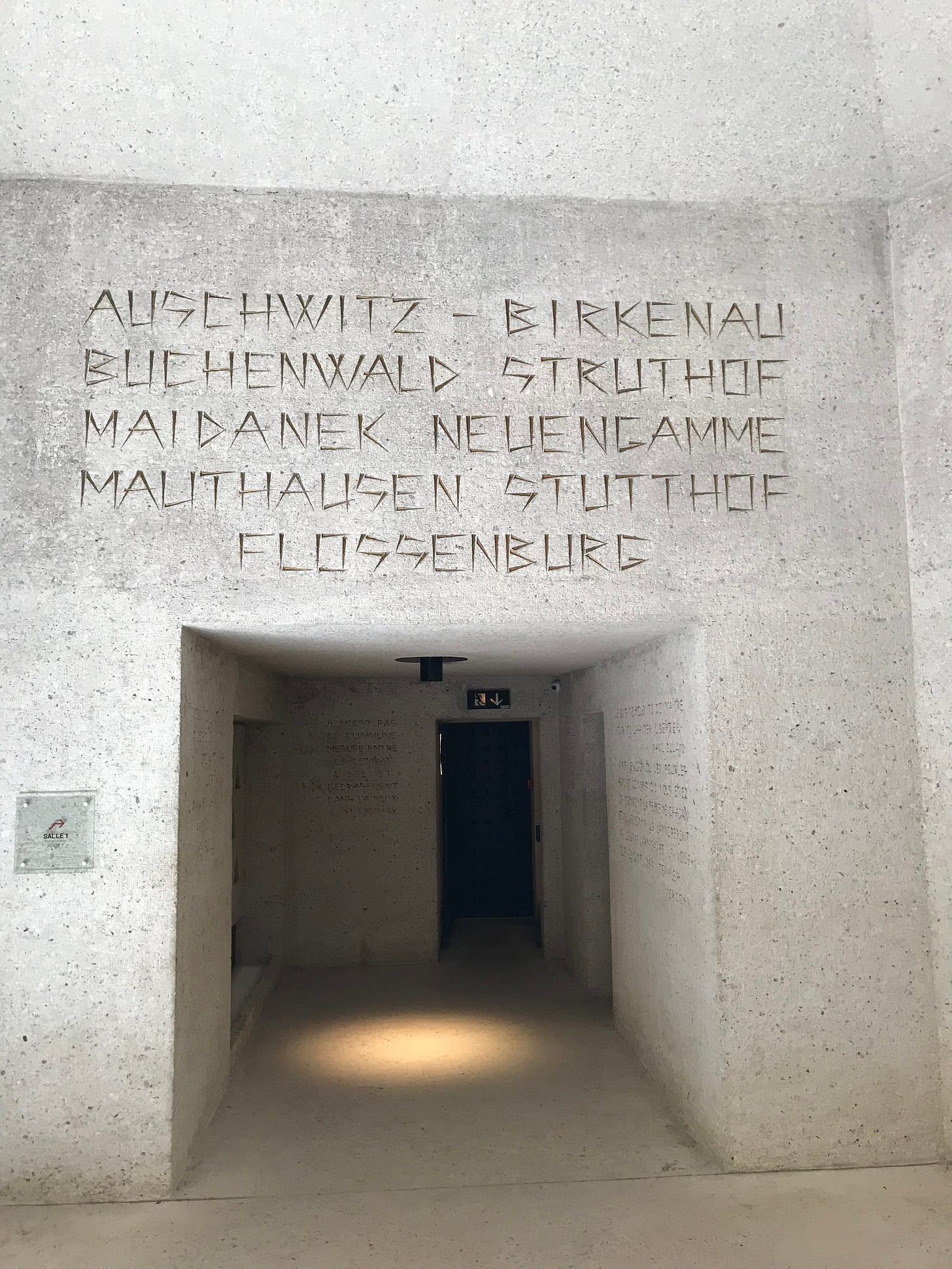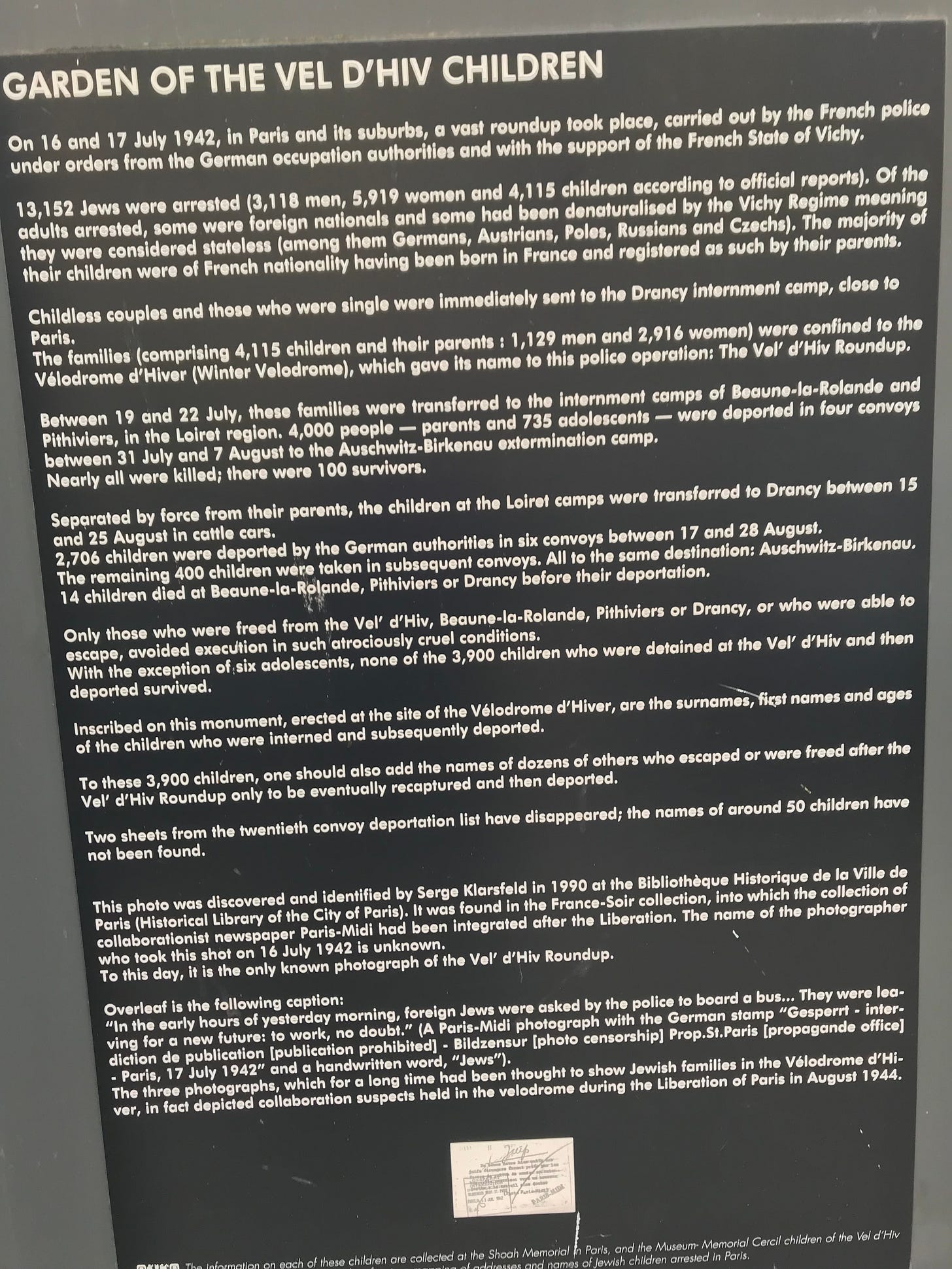Now booking small, private tours of Paris!
Contact me at paristravelguide@yahoo.com
While some people applaud, a Frenchman weeps seeing the French flag being lowered as Nazi troops enter Paris. What follows during four years of fascist occupation should never be forgotten, especially the mass roundup of Jews living in Paris during the infamous la rafle du Vélodrome d’Hiver that took place on the 16th to the 17th of June, 1942.
la rafle du Vélodrome d’Hiver (Roundup at the Winter Veledrome)
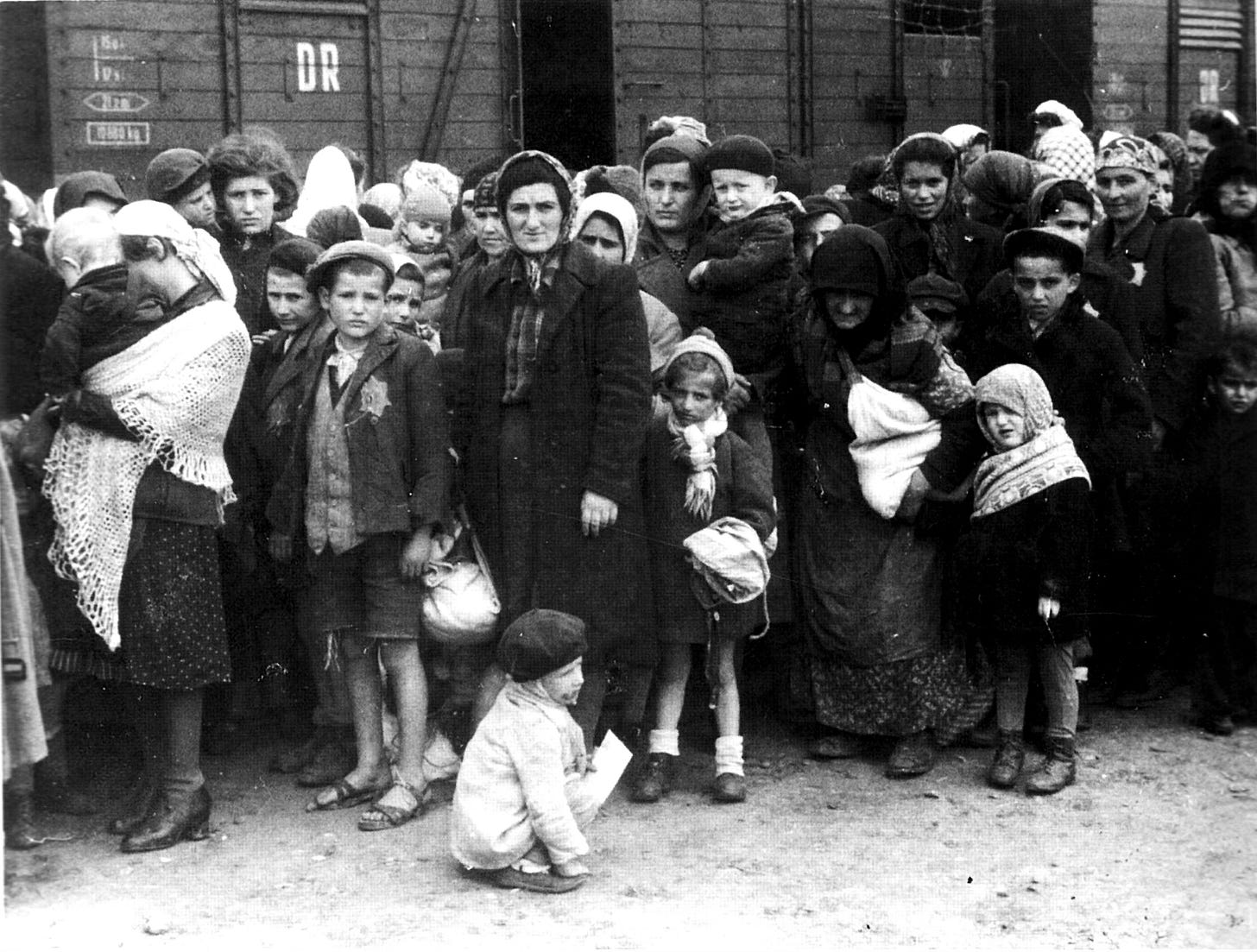
At first, they came for just the “foreign” Jews, which limited the outrage and resistance among the general population. Over 6,500 foreign Jews living in France received a summons in the mail. It was a trap! People who responded to the summons were arrested and immediately shipped by train to special camps in France, women, children and men.
The first round up of foreign Jews, took place with supposedly "humanitarian” measures in place to keep families together. These, in fact were a fiction, because many of the parents of these children had already been deported. The youngest child sent to Auschwitz under this phase of the roundup was 18 months old.
At 4:00 in the morning of 16 July 1942, the roundup began, with orders that "the operations must be effected with the maximum speed, without pointless speaking and without comment."
In total 13,152 Jews were arrested, 44% were women; 31%, children. Baggage was restricted harshly: a blanket, a sweater, a pair of shoes and two shirts. Most families were split up and never reunited.
Inside the Vélodrome d’Hiver (Vel’ d’Hiv’ as it was commonly called) thousands were held. There were no lavatories. The ones available were blocked to prevent escape. The Jews who were arrested had only food and water brought to them by Quakers and the Red Cross. A few doctors and nurses were allowed to enter. There was only one water faucet.
Those who tried to escape were shot on the spot. Some took their own lives.
After five days, the prisoners were taken to the internment camps and later to the extermination camps.
The extremes of fascism today may seem remote, distant and hazy memories in black and white, lost in the midsts of today’s on-line, in-color, “modern” world of streaming services and remote work, but history has to be remembered, has to be revived and revisited, to help us to “never forget” and never repeat the horrors that will inevitably result if these evil forces are allowed to reign unopposed and unchecked.
Paris Schools
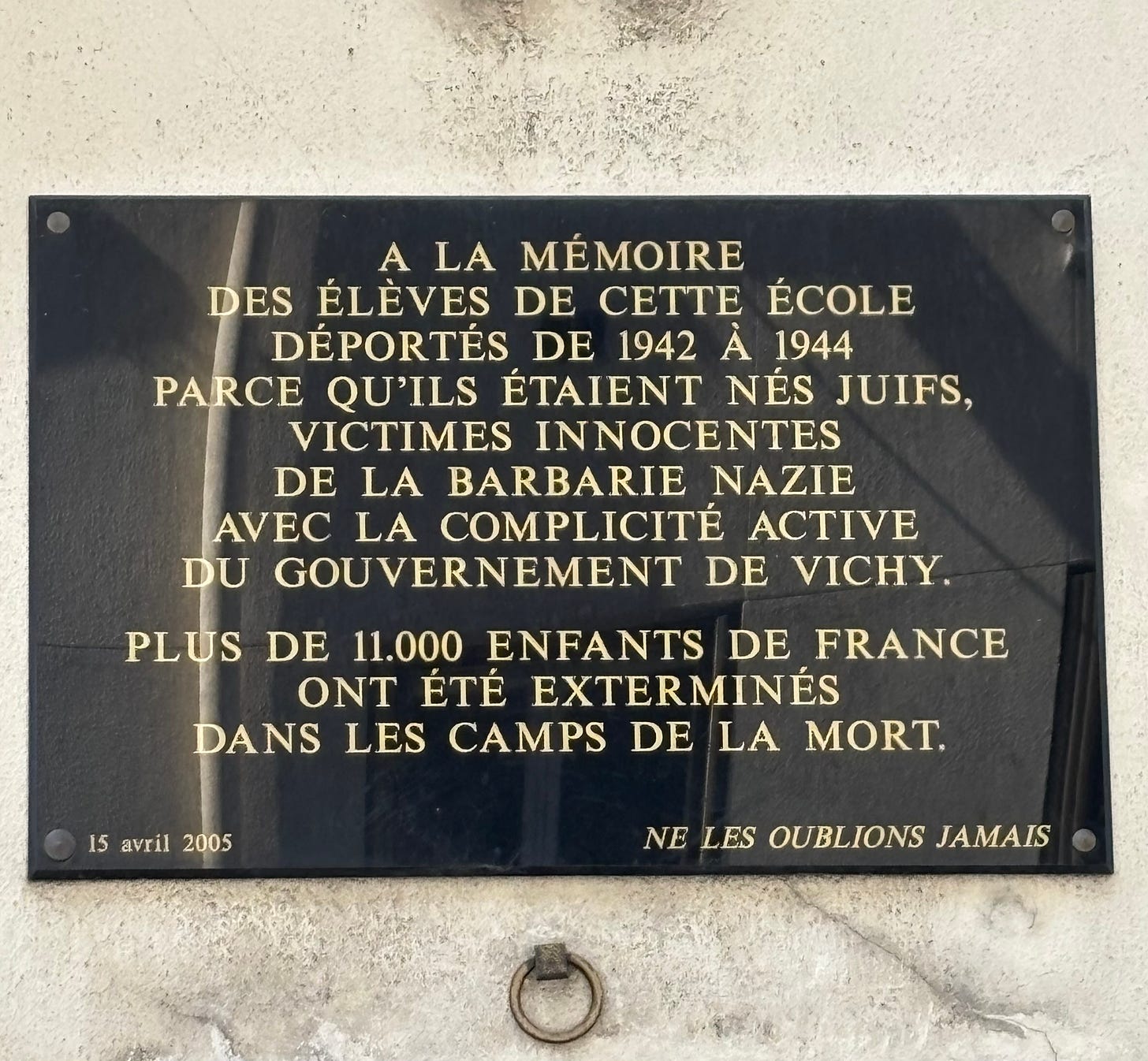
Every school in Paris that existed during those years has a plaque like this one, honoring the lives of the children — little children and babies — who were hauled out of their homes, beds and schools, rounded up off the street, put into cattle cars never to see their families, their friends, their teachers, again.
Some schools will have an older plaque often just inside the doors, with the names and ages of the children who went to that school who were deported to the death camps.
In Paris, there are a number of memorials to the victims of the fascist regime that ruled through fear, intimidation, repression, violence, control and lawlessness.
Mémorial des Martyrs de la Déportation (Memorial to the Martyrs of the Deportation)
The Mémorial des Martyrs de la Déportation, honors the over 200,000 people who were deported from Vichy France to the Nazi concentration camps during World War II. Located on the site of a former morgue, behind Notre Dame, it was designed by French architect Georges-Henri Pingusson and inaugurated by Charles de Gaulle in 1962.
Inside, there is the tomb of an unknown deportee killed at the camp in Neustadt. Along both walls of the narrow, dimly lit chamber are 200,000 glass crystals with shining lights symbolizing every one of the 200,000 deportees who died in the concentration camps, with a single bright light at the end of the tunnel. Ashes from the camps sit in urns at either end.
Garden of the Vel’ D’Hiv’ Children
Perhaps the saddest memorial in Paris is the garden on the site of the Vel’ d’Hiv’ that memorializes the children deported, and murdered in the death camps. Their pictures hang from trees, with their stories. A wall commemorates all the names of the children brutally killed in the name of fascism.

We must never forget the horrors that come about when a small group of determined people use tools of fear and intimidation to scapegoat a small number of people. It starts off small, and with people who are “other” than us. But like a cancer, unchecked, its weight, its insatiable desire for power and control, grows, swallowing more and more innocent victims into its maw.
The horrors of the fascism of the 1930’s and ’40’s must be remembered, not in distant hazy black and white, but in living color — for they seem to be rising again. It is well to think about the classic poem of Martin Niemöller:
First they came for the Communists
And I did not speak out
Because I was not a CommunistThen they came for the Socialists
And I did not speak out
Because I was not a SocialistThen they came for the trade unionists
And I did not speak out
Because I was not a trade unionistThen they came for the Jews
And I did not speak out
Because I was not a JewThen they came for me
And there was no one left
To speak out for me
Never forget!
Johnny


